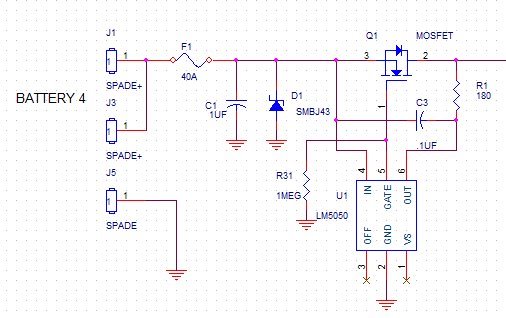Other Parts Discussed in Thread: TPS2410, LM5050-2
Greetings to you.
I am having an oscillation problem on the gate drive pin on the LM5050-1. With a light load the gate drive pin is good. With a 10A load, the gate drive pin is good. However, if I have a 10A load, and the load has a PWM drive of 16khz with any duty cycle, the gate drive pin ramps up and pulls down hard. The ramp up is a much lower rate than the 16khz PWM.
Please see attached pictures. Power supply is 20V. MOSFET RDSon=3.3 millohms. Circuit used is Figure 24 of data sheet, except output load capacitors = 2000uf. This oscillation problem causes high MOSFET power dissipation. How can I solve this problem? Thank you!


